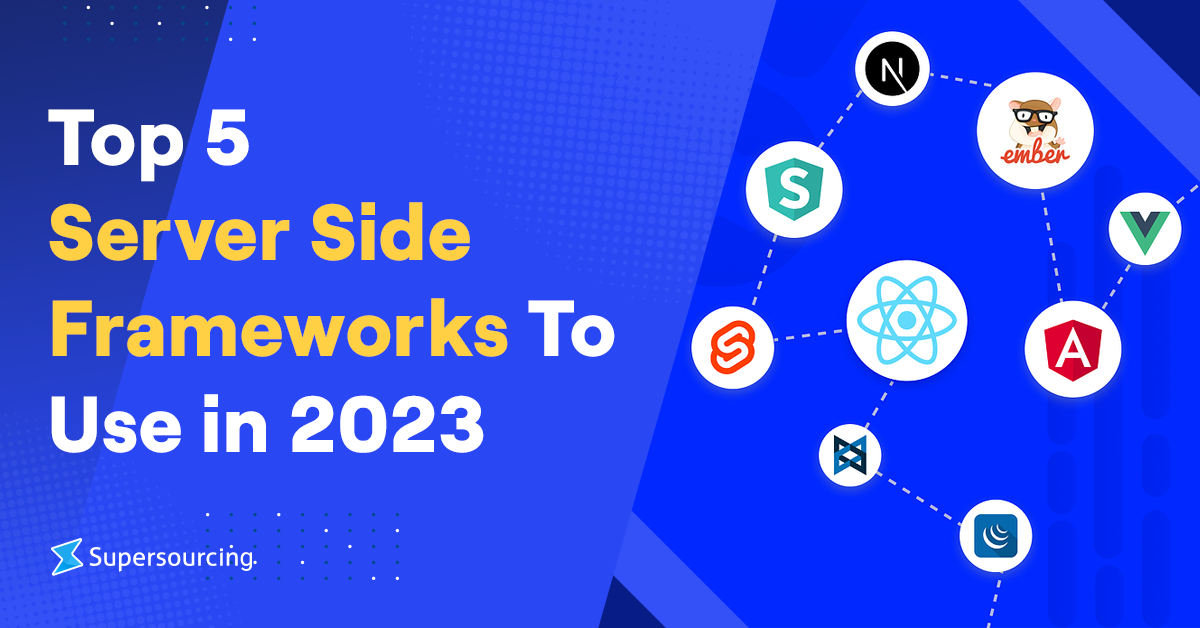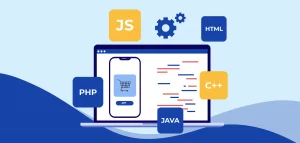Table of content
Server-side programming is essential for building and operating applications, and it primarily focuses on background operations. Server-side frameworks are critical in providing structural support to backend programming languages. However, choosing a server-side framework can be a daunting task. To simplify this process, we present one of the best server-side frameworks with a detailed description of its features. Read on to explore the best server-side frameworks.
Django
Django is a free server-side framework written in Python. It was first introduced in 2005 and is one of the most widely used frameworks. This framework uses the model-template-views (MTV) pattern. Django’s features, such as reusability and the CRUD (Create, Read, Update, Delete) interface, make it an ideal choice for developers who work on Python projects. Django is very versatile and can power multiple types of projects. A few examples would be news blogs, management systems, and social networking apps. It is also easy to integrate with any frontend setup, including XML, HTML, and JSON.
Django is a highly secure framework that offers protection against clickjacking, cross-site scripting, forgery, and users’ login safety. It uses cryptographic hash and one-way functions to avoid such security issues. Django is also scalable and hence, startups, SMEs, and large websites, and developers can benefit from Python libraries that make the server-side framework even more efficient.
Django is SEO-optimized, allowing developers to quickly improve their search engine rankings. They can use understandable URLs instead of IP addresses and numeric codes on servers. This backend framework is also popular for its fast development because of properties like batteries included, open-source, and extensive documentation. This enables developers to build and release applications quickly.
Django’s massive community support makes it an excellent choice for novice developers. Django developers can easily access the community on popular forums such as Dev Community, GitHub, Stack Overflow, and the official Django website’s discussion forum. Many prominent websites such as Disqus, Instagram, Bitbucket, and Mozilla, are using Django. Even startups, SMEs, and large enterprises trust Django. Evidence? Over 27k forks and 64k stars on GitHub and 2493 companies mentioning it on StackShare.
ExpressJS
Express JS is a highly efficient and free web framework for both server-side and frontend development in Node.js. It offers a wide range of possibilities for developers to create web and mobile applications, including hybrid, single-page, and multi-page applications, as well as APIs, making it a popular choice for businesses.
Thanks to its strong routing, templating, and debugging capabilities, this flexible framework has gained significant traction in the development community, as evidenced by its 57,000 stars on GitHub. Prominent companies like IBM, PayPal, Twitter, Trustpilot, and Fox Sports utilize Express JS.
The framework provides advanced routing features and the ability to store web pages via URLs, as well as the capacity to create dynamic content through its templating engines. Moreover, Express JS offers a wide range of pre-built components, which allows developers to speed up the backend development process significantly.
The popularity of JavaScript and its ranking as one of the most popular technologies on Stack Overflow’s Developer Survey for the past nine years, make learning Express JS a straightforward process. Development teams don’t have to waste time learning a new language, as most developers are already familiar with JavaScript.
Debugging with Express JS is also a hassle-free experience, as the framework only targets the section of the application where debugging is necessary, making the process seamless.
Ruby on Rails
If you want to use the Ruby programming language to build applications, you might want to consider Ruby on Rails (RoR) as a framework. Rails is an open-source and free framework that David Heinemeier Hansson released to the public in 2004.
Like many other server-side frameworks, Rails follows the Model-View-Controller (MVC) pattern and is compatible with CSS, HTML, and JavaScript user interfaces. With a supportive community, Rails has garnered 50.7k stars and 20.3k forks on GitHub. Notable web applications that utilize RoR in their tech stacks include Shopify, Airbnb, SoundCloud, GitHub, Dribble, and Bloomberg.
RoR offers various gems that allow developers to quickly build applications, boosting development speed while also reducing project costs. Rails is a popular server-side framework with a supportive community, with approximately 417,933 websites using the framework, according to SimilarTech, making it easy to find Rails experts and community forums.
Ruby on Rails also features a robust library named “Active Record,” which allows developers to efficiently interact with databases and conduct data queries with ease.
Flask
Flask is a microframework that is written in Python. Despite its minimalist approach, Flask can help build powerful websites. Flask comes equipped with a development server and debugger. It also includes support for Jinja2 templating, secure cookies, unit testing, and RESTful request dispatching. Additionally, Flask has excellent documentation and an active community that supports its use.
Flask has gained tremendous popularity, particularly among developers who need to provide web services on small, resource-constrained systems such as running a web server on a Raspberry Pi, drone controllers, and other similar devices. Flask’s small size makes it a popular choice for building lightweight web applications that can run on smaller devices. With its many built-in features and easy-to-use API, Flask has made a name for itself in the Python web development community.
ASP.NET
ASP.NET is a web framework that has been developed by Microsoft for building modern web applications and services. This open-source web framework enables developers to quickly create websites based on HTML, CSS, and JavaScript. With its scalability and ability to handle millions of users, ASP.NET can easily add more complex features such as Web APIs, forms over data, or real-time communications.
ASP.NET is built on the Common Language Runtime (CLR), which differentiates it from other frameworks. This allows programmers to write ASP.NET code using any supported .NET languages such as C#, Visual Basic, and more. The framework benefits from excellent tools that are often free, an active developer community, and well-written documentation. All of it together makes it easier to develop and maintain web applications.
Some of the well-known companies that use ASP.NET include Microsoft, Xbox.com, Stack Overflow, and many others. With its versatility and ease of use, ASP.NET has become a popular choice among developers for creating robust, scalable, and modern web applications.
Wrapping Up!
This article provides an overview of a leading server-side framework along with its detailed features. While different frameworks may hold varying positions, it can be challenging to identify the single best option. Therefore, developers, startups, and enterprises must choose a server-side framework that meets their specific project requirements.







